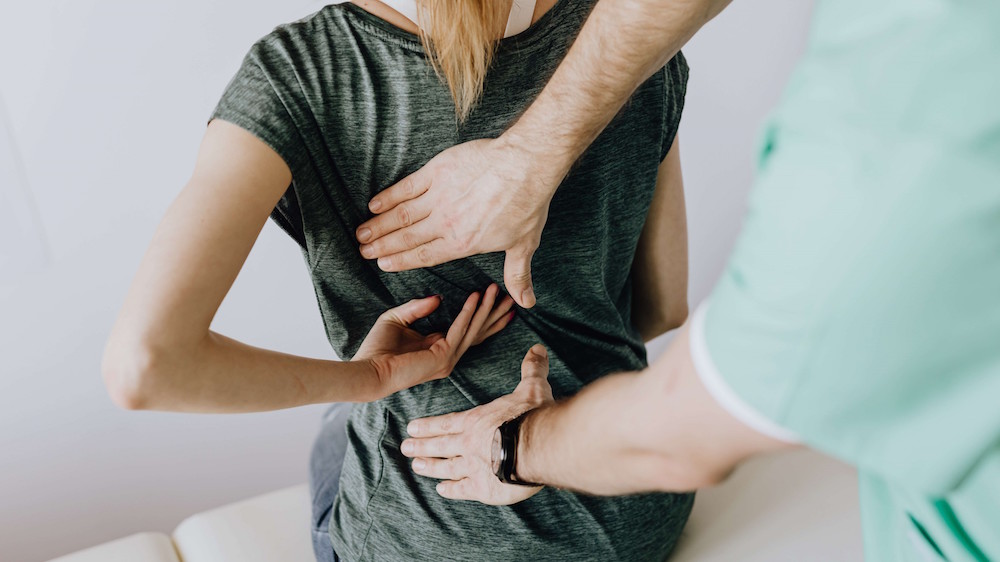Find out if your low back pain is just muscle spasm or sciatica. Learn what signs can be dangerous.
Low back pain (LBP) is one of the top complaints seen by a neurologist, but has become even more common as more people work from home. The pain is located in the lumbar region and can feel like stiffness, dull ache, stabbing or shooting pain. The most common cause of low back pain is muscle strain or muscle spasm. Less frequently, back pain can be caused by a disc herniation that pinches a nerve in your back. This can cause a shooting pain that runs from your buttocks down one leg called sciatica or radiculopathy. Regardless of the cause, low back pain can be a debilitating disorder leading to missed school or work days.
What can lead to low back pain?
- Improper lifting or twisting with a heavy object
- Working with a machine that vibrates
- Prolonged sitting or standing
- Motor vehicle accident or other trauma
- Falls
- High impact exercise or activities
- Bad posture
Warning signs to seek urgent care
- Bowel or bladder control problems
- Numbness in groin region
- Leg weakness
- Fever or other signs of infection
- Taking steroid, immunosuppressant, blood thinner medications
- History of cancer
How is low back pain diagnosed?
Your doctor will take a history and perform a physical examination to determine the cause of your back pain. You may be sent for imaging studies to see if there is a fracture or disc herniation pinching a nerve. An EMG/NCS at Neurotest of New York can help your doctor locate which nerve in your back is pinched (or compressed) and causing your pain.
Treatments
The good news is that most back pain gets better on its own by 4-6 weeks. If back pain lasts longer than 3 months, then it is called chronic low back pain.
Home remedies include heating pads, stretching, yoga, and massage. Staying active helps with recovery and bed rest can actually make the pain worse if the problem is from a muscle strain.
You can take over the counter medications such as acetaminophen, ibuprofen, or naprosyn as needed for pain. Your doctor may prescribe a muscle relaxant or an antidepressant or anticonvulsant type of medication for severe cases. You may also benefit from a course of physical therapy.

